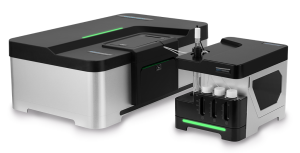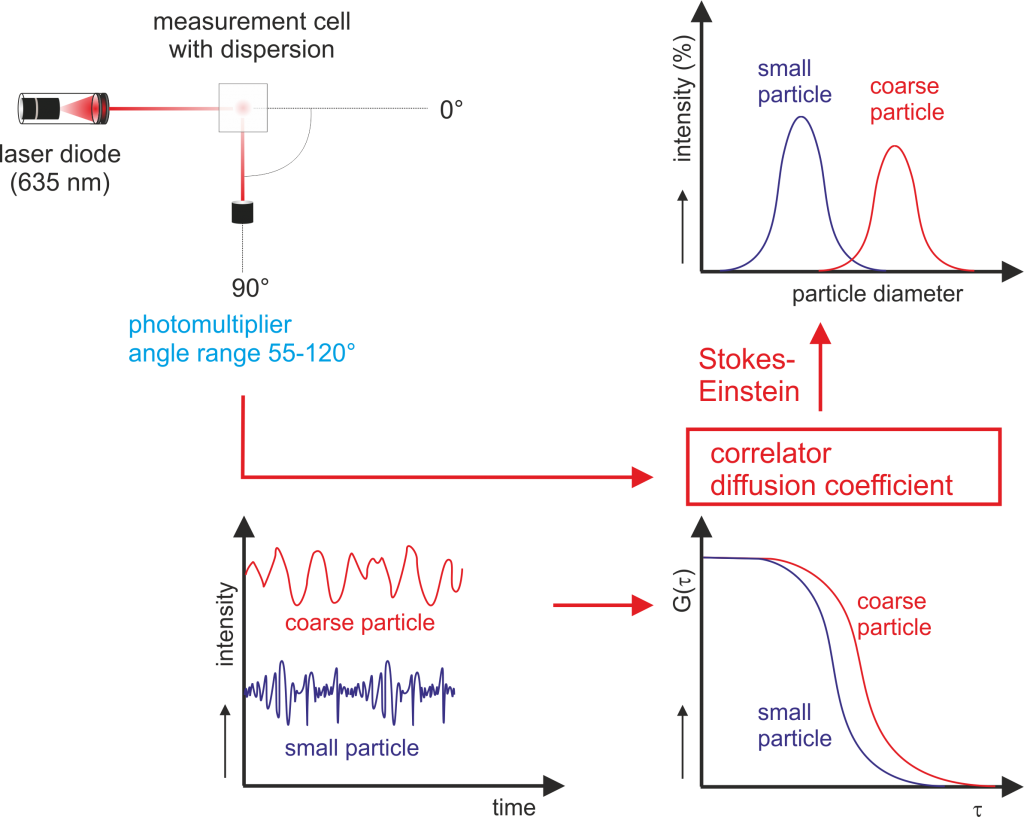Particle size measurement using multiangle dynamic light scattering
The dynamic light scattering (DLS) is a technique to measure the particle size distribution of nano- and submircosized particles, which is used primarily in pharmaceutical and biochemical industry. On the one hand many application for example in the protein research or analysis of liposomes and micelles cannot be performed by means of other methods. On the other hand it is relatively easy to get an analysis result using DLS, when the hard- and software of the instrument are user-friendly designed.
Measuring principle
In particle size measurements using dynamic light scattering (DLS), a laser beam is scattered on very small, finely dispersed particles (usually < 1 µm) in a highly diluted liquid dispersion. The scattered light of each particle will then interfere with each other. Since the particles constantly change locations due to Brownian motion, the position of the scattering centers changes with respect to each other and the interferences lead to small fluctuations in scattering intensity (this explains the name “dynamic” light scattering). The change of the scattered light intensity is measured in relation to the time at a certain fixed angle to the direction of incidence of the beam – usually 90°. This provides information about the velocity of the particles in the dispersion, the diffusion coefficient is determined by an autocorrelation of the raw data, and the particle size (hydrodynamic diameter) is determined according to the Stokes-Einstein relationship.
Measurement principle DLS
Literature und norms
ISO 13321 – Particle size analysis – Photon correlation spectroscopy
 Deutsch
Deutsch English
English


